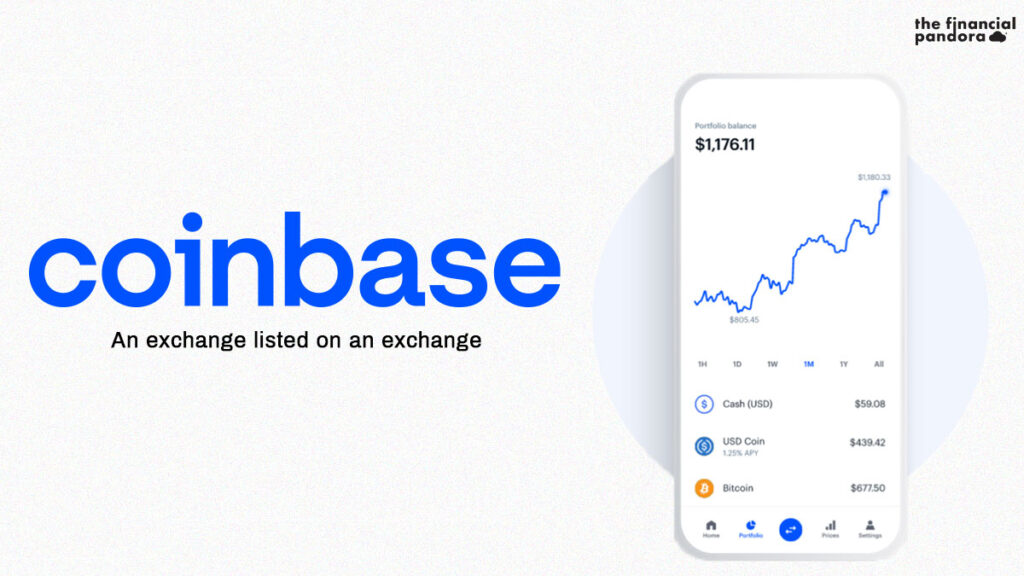The 9-year-old Coinbase Global Inc., the largest exchange for cryptocurrency in the United States of America, made its blockbuster debut on Nasdaq under the ticker ‘COIN’ on April 14th, 2021. The listing took place through the ‘Direct Listing’ route through which they would be able to directly list their shares on the exchange without raising any funds from the public as would happen in a traditional IPO route. Before jumping into the post-listing havoc, let’s look at the founder’s story and how did it get here.
The backstory:
Brian Armstrong, now the CEO of Coinbase, graduated with a dual degree in economics and computer science in 2006 and worked at IBM and Deloitte till 2010. He then joined Airbnb in 2011 where he learned about international payment systems.
Fascinated by reading Bitcoin’s white paper, he founded Coinbase in 2012 with a mission to create an open financial system for the world using blockchain technology and got accepted in Y Combinator accelerator with $150,000 of investment.
Since then, Coinbase has raised a total of $547 million from Tiger Global Management, Andreessen Horowitz, Ribbit Capital, and others.
A dive into numbers:
As per their S-1 filing (IPO filings), Coinbase with its 11% share in the cryptocurrency trading market has around 43 million registered users out of which only 2.8 million users are active monthly. It also serves 7000 institutions, and 115,000 developers, merchants, and other ecosystem partners.
The company closed 2020 with total revenue of $1.3 billion which is a 1.5X jump from $533.7 million in 2019. It also turned a $30.4 million loss in 2019 into a profit of $322 million. And all this with just $56 million (4% of total revenue) in marketing spend!
Although, some credit must go to the combined effects of a global pandemic, lockdowns, and few tweets from public figures like Elon Musk.
Around 86% of their revenues come from transaction fees charged on every buy, sell, and withdrawal transaction carried out by the user. Other revenue sources like licensing, campaign revenue, etc. have earned a good $45 million in the last year.
The post-listing havoc:
The stock opened for trading at a high price of $381 against the reference rate set by Nasdaq of $250. It soon reached the high of $414 which briefly gave Coinbase a market capital of $100 billion.
The price of the stock fell as fast as it went up and lost 32% of its value since the peak as the hype train came to the station. Meanwhile, Armstrong managed to take good advantage of the hype cycle and sold 749,999 shares worth about $292 million in the first trading session.
As per Coindesk, the investors also managed to get a good exit as they sold $5 billion worth of shares on the first day of listing.
Interestingly, Bitcoin also peaked at $64,829 on the day of Coinbase listing and has declined more than 20% from the peak.
Reasons why the market is struggling with the Coinbase listing:
i. For a crypto exchange to be successful, it has to work within the regulations of all regions it operates in. The federal banks and governments are not quite sure how to handle this rapidly growing market of alternate money and can ban the entire trading activity with a single law.
ii. According to ZDNet, in 2020 alone, cryptocurrency worth billions was stolen in 122 attacks on exchanges and wallets.
iii. As mentioned earlier, Coinbase is majorly dependent on revenue from transaction fees on trading activity. There is already a pool of competition from companies like Gemini, Bitstamp, Binance, etc. which will drive down the commission percentage by offering low or no commission trading. Paypal, Cash App, and Robinhood are also getting ready to offer cryptocurrency trading facilities to their large user base.
The token of the future of Coinbase:
To mitigate the decreasing commission percentage, Coinbase has to come up with new products or services which will help them to monetise millions of users and which will help them to bring the next billion users onto its platform just like Armstrong envisions it.
The rising popularity and tremendous potential of Non-fungible Tokens (NFTs) could be a great opportunity for Coinbase to tap into considering it can leverage its reach of millions of users to buy in as the hype cycle is taking off.
Overall, the Coinbase stock could prove to be a great hedge against the volatility of the crypto market as no matter what the direction of the crypto market is, people will be transacting and Coinbase’s piggy bank will keep collecting revenues.
It is fascinating to imagine that all the billions of dollars poured into the crypto ecosystem and all the businesses built around it are just a house of cards resting on the hope that the government won’t wake up one day and suddenly shut it all off.
This post was written in collaboration with Asif Yahiya Sukri LLP. Asif Yahiya Sukri LLP provides unparalleled personalized financial services to a broad range of clients across different geographical locations. With a presence in the USA, India and the MENA region, they ensure that all of your financial decisions are made carefully and with your best interests in mind. They are innovators who understand what goes into building companies.
You can also reach out to them on info@aysasia.com
Follow Us @




